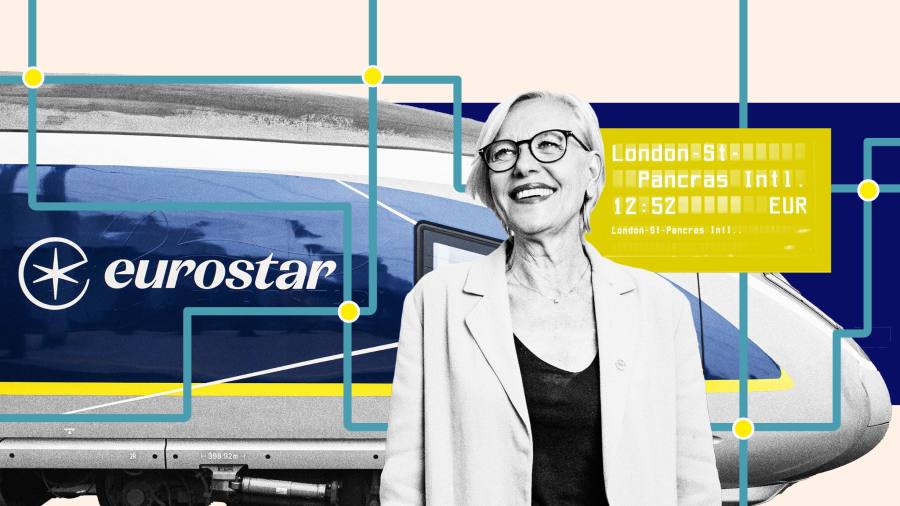
Visiting the London terminal of the Eurostar cross-Channel rail service, there is a clear sign of one way that changing circumstances have buffeted the operation.
Four years ago, passengers were able to mill about in an open space near the gates leading to the security and passport checks at St Pancras International station. But, since the UK left the EU’s free movement rules in January 2021, border guards have had to stamp departing passengers’ passports, slowing processing.
The area outside the gates is divided into lanes, to handle the resulting hundreds of metres of queues. At busy times, lines of people waiting sprawl out over much of the station’s ground floor.
The waiting times are among multiple developments in recent years that have made life tougher for the Eurostar Group. Like other passenger transport companies, the multinational group incurred significant losses during the coronavirus pandemic.
It now faces the challenge of regaining passenger numbers saddled with debt levels far higher than before the pandemic. After the company’s Covid-era borrowings — many of them a result of a French state-backed bailout in 2021 — its debt at the end of 2022 was €964mn.
Eurostar is struggling with staff shortages and train reliability issues, and has had to cancel significant numbers of trains over the past year. It has stopped running trains from London to the Disneyland resort near Paris, as well as its former summer direct services from London to Avignon, in southern France. In the UK, Eurostar has also abandoned its former stations at Ebbsfleet and Ashford in Kent and collects passengers only at St Pancras.
Coming only two years after it narrowly averted bankruptcy, the retrenchments have stoked fears that a pioneer of international high-speed rail services is in decline. In the UK media especially, they have been viewed as emblematic of the burdensome bureaucracy and crimped ambitions of the post-Brexit economy. More broadly, the operator’s troubles spell gloom for a key element of the effort to shift passenger journeys from air to rail as Europe attempts to decarbonise its economy.
Yet beyond the headlines, the company has undergone a transformation in recent months, completing a long-awaited merger with one of Europe’s key high-speed rail operators and welcoming a new chief executive. Gwendoline Cazenave, who took over in October, says the new, combined Eurostar Group remains committed to expanding and intensifying its operations. The ambition, she tells the FT, is to build “what I call the backbone of sustainable travel in Europe.”
Eurostar merged last year with Thalys, which operates high-speed services from Paris to Brussels, Amsterdam and Cologne, to launch what former SNCF president Guillaume Pepy predicted would be a “new era” in high speed rail in Europe.
The group is now aiming to double traffic from the 14.8mn people it carried in 2022 to 30mn people annually by 2030, according to Cazenave. The operation carried 8.3mn passengers on Eurostar trains and 6.5mn on Thalys in 2022.
The 2022 figures marked sharp recoveries from those for 2021, when cross-Channel Eurostars carried just 1.6mn passengers and Thalys just 2.7mn. Neither operation, however, has yet reached the same annual traffic levels of 2019, the last full year before coronavirus disruption, when Eurostar carried 11.1mn passengers and Thalys 7.9mn.
In that context, the station closures might seem like scaling back ambitions at a moment which demands greater boldness. Cazenave says in fact it reflects a tightening of priorities.
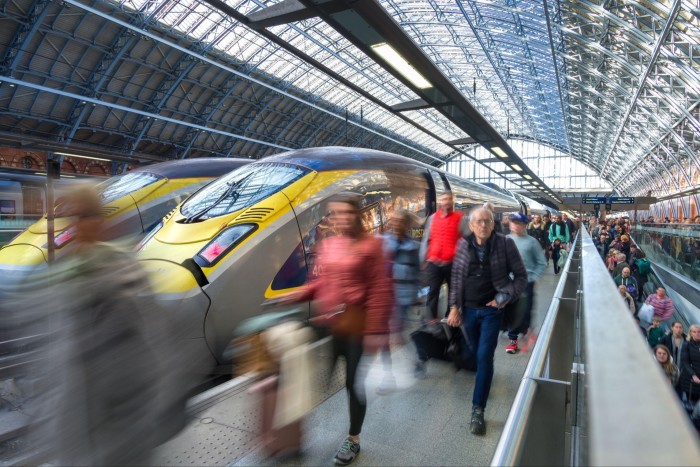
“We’re facing financial challenges, operational challenges and customer experience challenges,” says the veteran SNCF executive. “To tackle those challenges, we had to make a decision to focus on our core routes.”
The new, simplified strategy, however, still has to navigate regulatory and technical obstacles that are far more forbidding than for nearly any other passenger train service worldwide, and the possibility of increased competition on its key services.
Henry Posner, a veteran US investor in private European rail operations, says the cross-Channel operations in particular remain “trapped in the overlap of various European and national regulations”.
Slippery rails
The uncertainty facing Eurostar is not exceptional for an operation whose cross-Channel arm has seemed to be grappling with some kind of crisis almost since the first trains ran from London Waterloo to Paris and Brussels in November 1994.
During construction of the Channel Tunnel between 1988 and 1994, forecasts had projected that the operation within two years would be handling 13mn passengers annually — a level that the cross-Channel operations have still never achieved. They projected it would be carrying 20mn passengers annually by 2004.
The service carried only 3mn passengers in 1995, its first full year, and only 6mn in 1997.
Bent Flyvbjerg, the first BT Professor of Major Programme Management at Oxford university and VKR Professor at the IT University of Copenhagen, says the project was a “classic example of over-optimism”. The project features in Flyvbjerg’s book How Big Things Get Done.
Flyvbjerg’s work has detected a consistent bias on the part of those promoting major projects to overestimate likely future traffic levels, out of eagerness to gain approval. “Eurostar was assuming that the original projections were correct at the outset,” Flyvbjerg says.
He also points out that the costs of buying the complex trains came in well above expectations. When trains run across geographical borders they cross technical ones too, thanks to the different electrification and signalling technologies in each European country. Eurostar’s fleet bristles with multiple different beacons for communicating with different national signalling systems and equipment for handling different countries’ electrical voltages. “I would think that the whole signalling and safety system is too expensive to run,” Flyvbjerg says.
The operation also bears the scars of its untidy birth through complex, inter-governmental agreements about the building of new rail lines. It was originally set up without even a single, unified operating company. Different trains were operated by different national rail companies co-operating to run the services.
That cumbersome structure struggled to handle the emergence of competition from low-cost airlines, spurred by European legislation that came into force in 1993, just as the tunnel and the other European high-speed rail lines were being built.
One longtime insider in the industry, speaking anonymously, points out that projections before the opening of the tunnel had focused on the idea Eurostar would be competing with ferries and traditional airlines.
“The competition wasn’t with the ferries,” he says. “It was with low-cost operators going to destinations across Europe and mopping up the airline traffic that was considered to be the target for high-speed rail.”
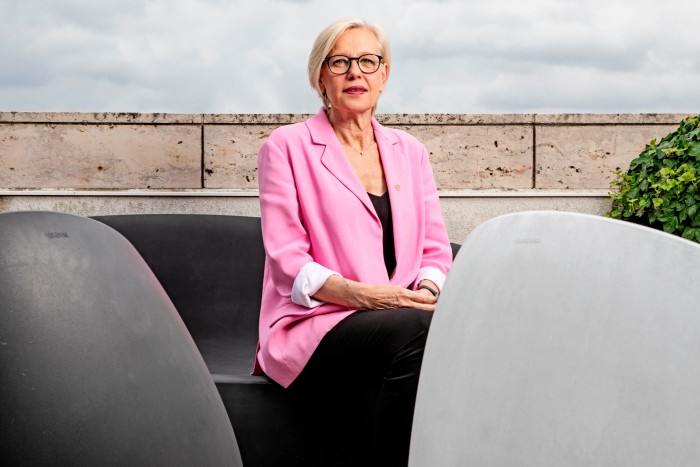
The early days of the cross-Channel service were also marred by delays in the provision of track where their trains could reach their 300km/h top speeds. HS1, the high-speed rail line from St Pancras to the Channel Tunnel, opened fully only in 2007, nearly 13 years after trains began making the crossing.
“It prevented them from getting off the ground, from being a real competitor to low-cost airlines,” the insider says of the delays.
Cazenave insists that the group is, despite the challenges, competing effectively with airlines. It has an 80 per cent share of the rail and air market between London and Paris and between Paris and Amsterdam, she points out.
She nevertheless accepts that the cross-Channel operations have high fixed costs, particularly because of sharp increases in the cost of using HS1. “Of course, if you asked me. ‘Would I like to have lower infrastructure costs?’ Yes,” Cazenave says. “But we have to deal with this.”
Recovery plan
By 2019, passenger numbers at Eurostar’s cross-Channel operation had not quite hit the heady heights predicted in the 1990s but were at record highs.
The coronavirus pandemic, however, pummelled the service. Passenger numbers fell 95 per cent from their peaks, and Eurostar came close to running out of cash before securing the £250mn bailout that May, led by the French government. It also borrowed £500mn from commercial lenders.
Profitable growth is therefore vital. The merger of Thalys and Eurostar, proposed pre-pandemic but completed in May 2022, gives the group a platform for growth, Cazenave says.
The company intends to co-ordinate the timetables of its cross-Channel and mainland European services more closely so that passengers travelling between cities with no direct connection — such as London and Cologne — will find a convenient connection.
“It’s about tight timetables between our cross-Channel and our continental trains,” Cazenave says.
Most of the connections will be at the Brussels-Midi station that both operations serve. She hopes to develop the station as a hub for connections to other operators as well. She points as one possible through connection to trains running from Brussels to Frankfurt, a city that technical restrictions prevent Thalys’s existing trains from reaching.
“We want to connect Thalys and Eurostar routes, but we also want to connect with other routes,” Cazenave says.
A tight focus on the busiest, most attractive routes can help the group as a whole to attract more passengers, Cazenave adds, allowing it to introduce more frequent services, which will themselves be still more attractive to customers. “The higher the frequencies we have, the better offer we give to our customers,” she says.
Yet everyone involved accepts that further challenges could yet complicate Cazenave’s recovery plan.
One of those is the EU’s projected introduction of a new, automated Entry/Exit System (EES) to register non-EU citizens when they cross the EU’s borders. Eurostar has expressed acute concern that there could be severe delays processing passengers who arrive at passport control at St Pancras without having first registered.
EES, which has been repeatedly delayed, is due to come into force in the second half of next year.
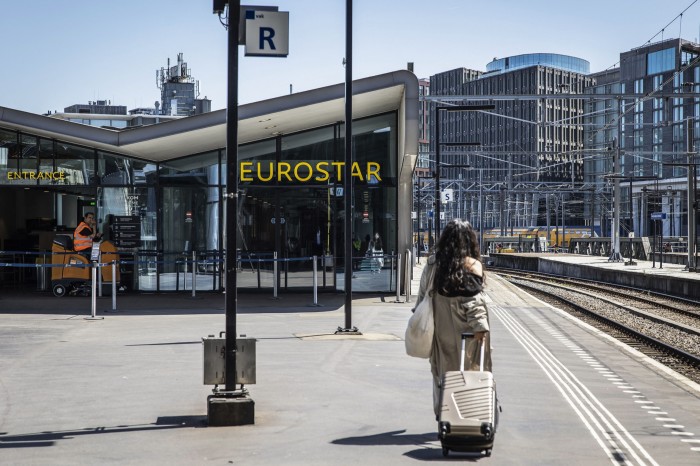
Cazenave says Eurostar is undertaking “proof of concept” of a system called Smart Check that would check in registered customers and give them border clearance using facial recognition. Eurostar has been trialling the system with its own staff. The group is also pushing for the system to include an easy-to-use, digital preregistration system that passengers can access at home.
“We really want to push digitised solutions,” Cazenave says.
The London to Amsterdam service, meanwhile, could face a damaging months-long suspension as ProRail, owner of the Netherlands’ rail infrastructure, works on a new, larger passenger terminal for the operation. The current Amsterdam Centraal terminal can handle only 250 people. But ProRail has said work to build a new terminal to handle up to 600 people could leave Eurostar with no facility for up to 10 months, starting around June 2024.
Traffic on the London to Amsterdam route has grown rapidly since its inauguration in 2020. Cazenave is seeking to have an arbitrator devise a solution to retain the old terminal during the construction work. “We’re really asking about a solution to find a way not to close the current terminal,” she says.
Then there is the spectre of increased competition that could diminish market share. The complexity of running cross-border trains has deterred other operators from launching rival services, despite EU liberalisation rules that have demanded member states allow free competition in operations on their high-speed rail network.
For the Eurostar group, any competition is most likely to emerge on the Paris to Brussels route, where Thalys is currently the only operator, or between Brussels and Amsterdam, currently served by only Thalys and Eurostar. New entrants here would not face the complexities of satisfying the Channel Tunnel’s demanding safety and security rules or the high costs of using the tunnel and the high-speed link to London.
However, Getlink, owner and operator of the Channel Tunnel, is open about how it would like another passenger train operator to run in competition to Eurostar. It points out that an upgrade to the tunnel’s signalling system recently created extra, currently unused capacity for passenger services.
Deutsche Bahn, the German national rail operator, in 2010 brought one of its flagship ICE high-speed trains to St Pancras in a sign of its eagerness to start running to London, although it later abandoned the plans amid frustration about the difficulty of obtaining the required technical clearances. Renfe, Spain’s state-owned train operator, in 2021 expressed interest in running trains through the tunnel.
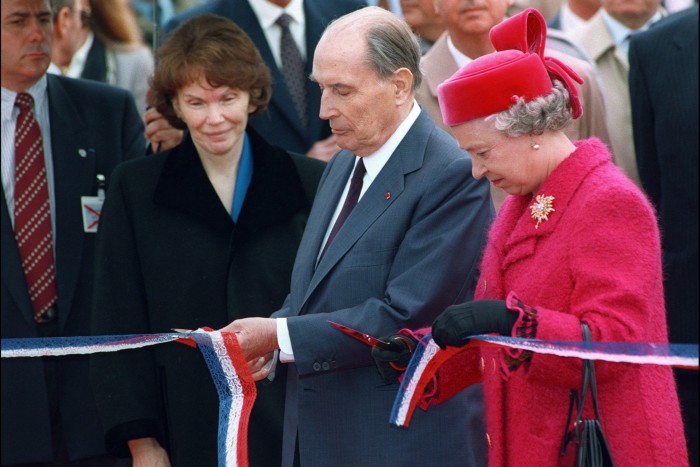
“The Channel Tunnel [has] capacity for additional high-speed rail services between the UK and destinations across continental Europe,” Getlink says. “We would be delighted to see more Eurostar trains and new entrants starting up additional services.”
Staff have already been warned they must improve operations to prepare for potential competition, according to Cazenave.
“The better we are in terms of customer experience, in terms of frequencies, in terms of quality on board, about the whole travel experience . . . the less the competition will take from our market share,” she says.
Back on track?
Not everyone is as optimistic about Eurostar’s future as its chief executive.
Posner, a regular traveller on both Thalys and Eurostar, criticises what he sees as a culture of “hopelessness” at both operations. He says that staff seem resigned to being unable to address difficulties they encounter.
The situation might improve for customers, he says, if the European Commission or national governments started to take serious action to ensure rail became more competitive. But he is sceptical about the prospects. “It’s not likely to happen,” he says.
Cazenave, on the other hand, insists that the operator can return to robust financial health.
She suggests it might even one day be able to reverse the recent cuts to routes. “Once we’ve dealt with our financial issues, repaid our debt, once we’ve fixed operational issues, once we can make sure . . . the experience in the station is improving . . . we can restudy these issues about Ashford and Ebbsfleet and Disney,” Cazenave says. “For the moment, we really need to be stronger within our core routes.”